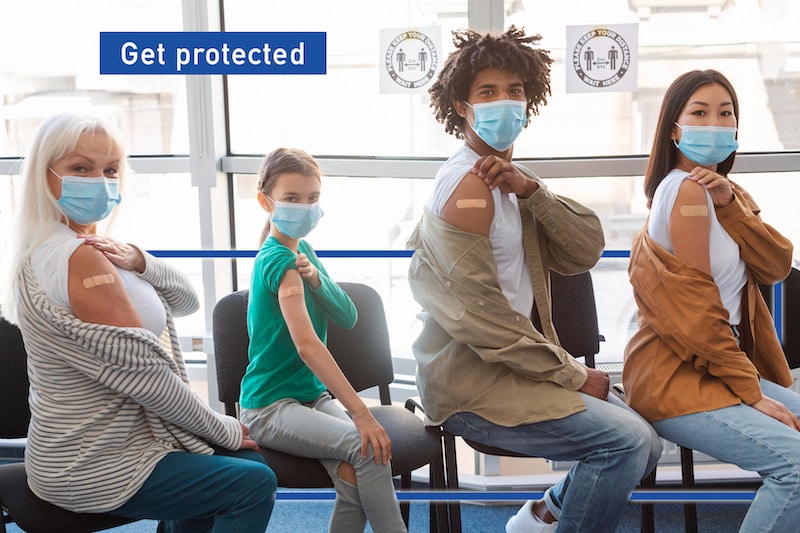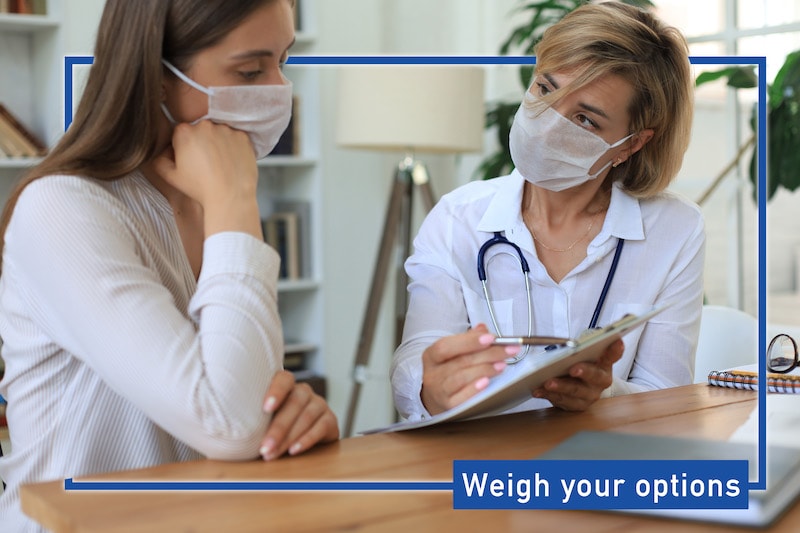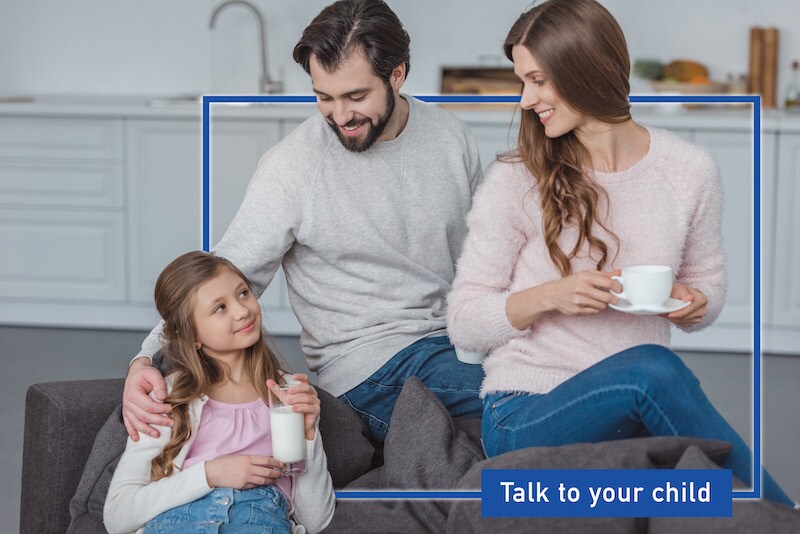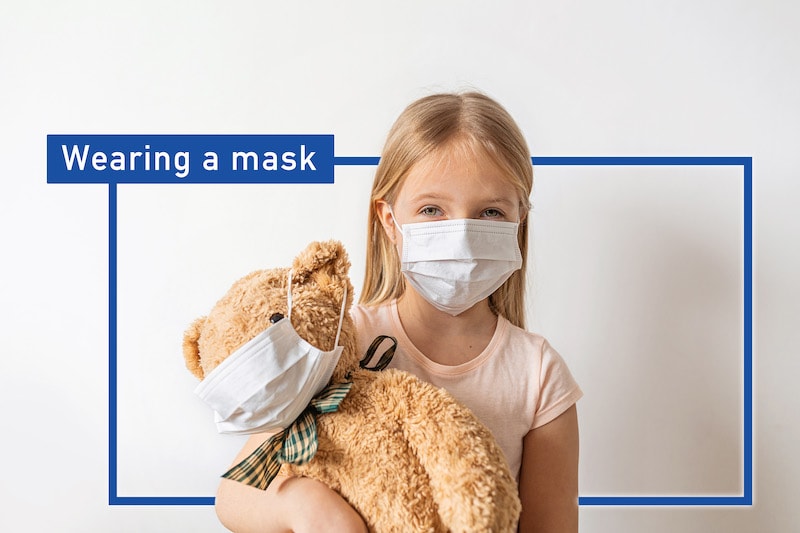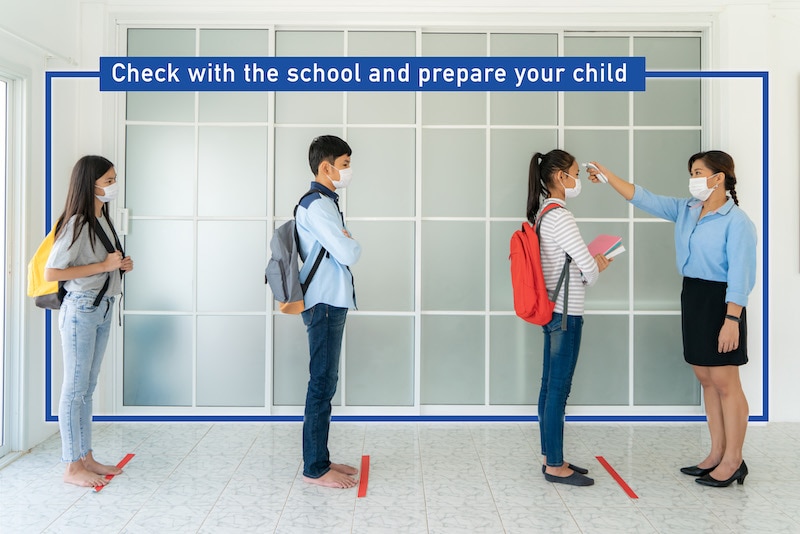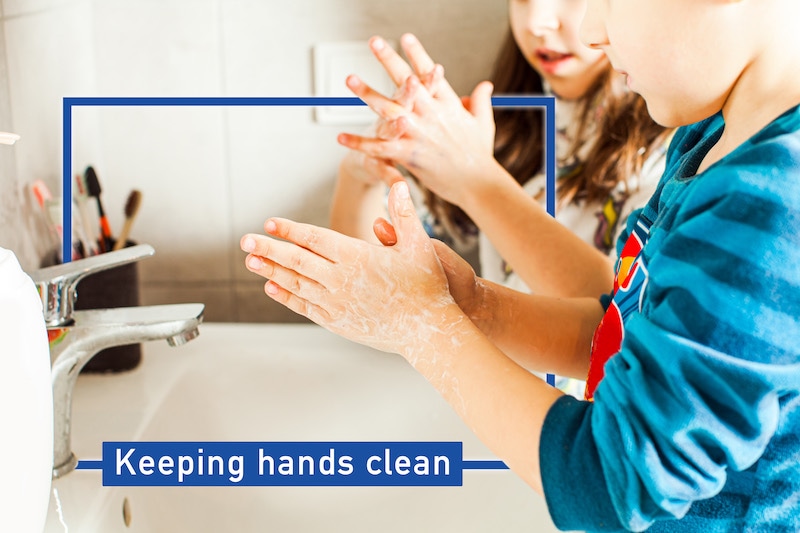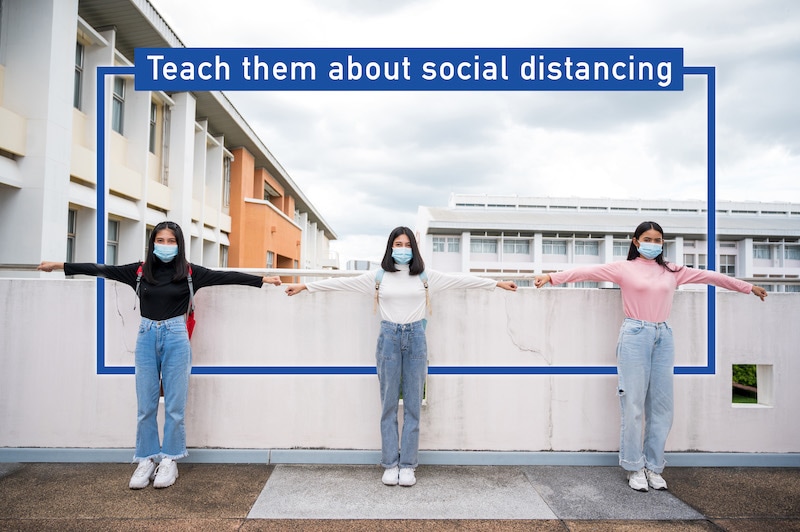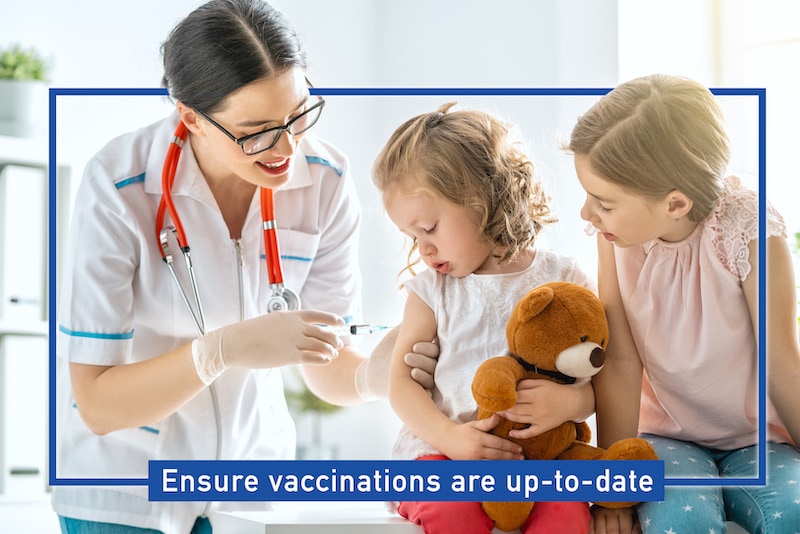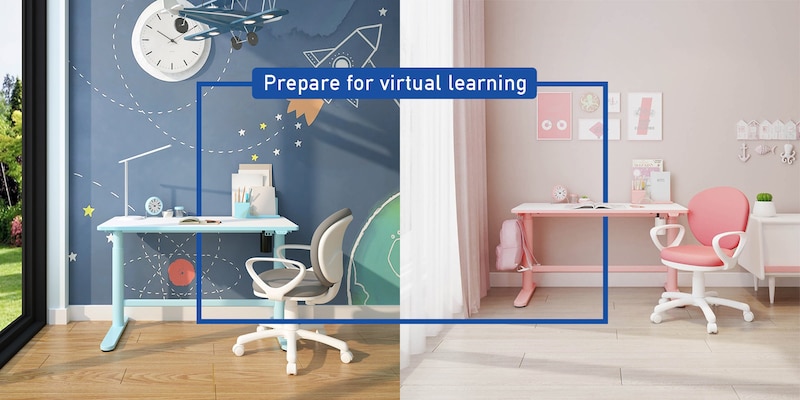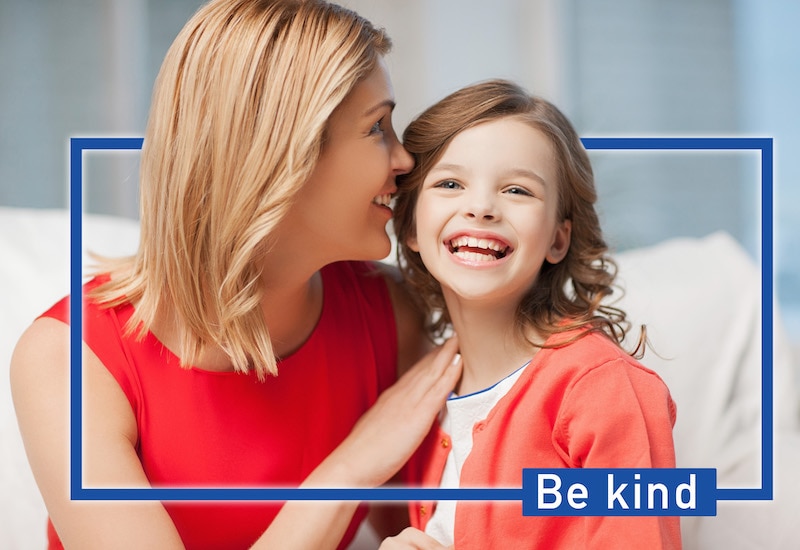More children are going in-person schooling this year, and the Delta strain on the surge. It will not be a totally "typical" back-to-school season. As the Delta strain spreads and COVID cases spike again, we're preparing for another school year disrupted by the virus. This has left many parents anxious and concerned about how the school year will go this year.
School administrators and government authorities typically decide what education and learning look like on a local scale. Ultimately, schools primarily select one of three options:
- Distance learning: In this arrangement, all instruction is delivered virtually via technology and other methods.
- In-person instruction: This paradigm is comparable to traditional education but has additional health and safety safeguards and processes.
- Hybrid schooling: This approach incorporates characteristics of both distance and in-person education.
During the school year and pandemic, institutions may use one or more strategies. Being equipped for a range of school settings can empower you and your child while also minimizing worry. Either your child is returning to school for in-person schooling, a combination of in-person and online education, or online classes, it is critical to train them how to keep safe, particularly during this COVID-19 coronavirus crisis. Like almost everything else, preparedness will be critical to ensuring a seamless transition to school for you and your children during the coronavirus pandemic.
Get protected
According to Mayo Clinic, the Pfizer-BioNTech COVID-19 vaccine is utterly successful in preventing the COVID-19 virus in children aged 12 to 15. Previous studies have found that the virus COVID-19 with symptoms in individuals 16 years of age and over is 95% effective. Your child can return to doing numerous things they could not have done due to the pandemic after being completely immunized. Two weeks after the final dosage of the Pfizer-BioNTech COVID-19 vaccine, your child will be treated as fully vaccinated.
Weigh your options
When selecting whether to go in-person or distant, it's a good idea to contact experts to receive the most updated information. Look for up-to-date news from credible sources such as the CDC. By doing so, it will assist you in assessing your status and comforting you. It would help if you also spoke with your physicians to discover more about the caseload and immunization rate in your area and how this may affect anyone in your family who has a medical condition that makes them more prone to the virus.
Talk to your child
Most kids are indeed aware of the pandemic and how their lives have dramatically changed it, so you should be open about the problem and encourage your child to help control the spread. Keep your cool and understand that children respond to what you say and how you say it. Allow them some authority. Let your children know how to safeguard themselves and others, so they perceive these measures as something that isn't terrifying but rather something we're doing to protect everyone. And give them the simple consolation that a large number of doctors and researchers are working as rapidly as possible to ensure public safety.
Wearing a mask
Allow children time to acclimate to wearing a mask for extended periods. The best way for children to learn is to observe their caregivers. The easiest method to encourage a child to wear a mask is to set a positive example: put on your mask in public and don't grumble about it. Allow your child to pick a mask and try wearing it at home, such as while enjoying a favorite TV show. Emphasize the necessity of mask-wearing to children in an age-appropriate approach, and let them know that wearing a mask helps prevent the transmission of germs. Children place more value in wearing a mask if they picked them or customized them. As another approach to normalize the behavior, parents may assist their children in making masks for their plush toys and stuffed animals.
Check with the school and prepare your child
If students are aware that they'll be subjected to a temperature check at the entrance and will be obliged to wear a mask in the classroom, they will go feeling confident and prepared to face the new normal. Ensure that you prepare your children for the likelihood that things will change again. Parents must also consider the likelihood that their children will attend school for several weeks or months and then revert to virtual learning from home.
Keeping hands clean
Hand-washing must be practiced at home, and you should clarify why it's necessary to wash their hands with water and soap for at least 20 seconds, particularly before and after eating, sneezing, coughing, or fixing a face mask. Schools should promote habits that urge frequent hand washing and appropriate hand hygiene practices, like kids covering their mouths and noses with elbows or napkins while coughing or sneezing and then washing their hands. If your child goes to in-person school, create daily rituals that promote healthy practices before and after school, such as bringing a spare face mask and hand sanitizer and washing their hands as soon as they arrive home.
Teach them about social distancing
Look for techniques to assist your children in visualizing the appropriate distance. Show your children how far saliva may go when they talk, sing, shout, or sneeze. The CDC now recommends 3 feet apart in schools. I n-person learning cannot be expected in densely packed urban environments with a distance of 6 feet. So the American Academy of Pediatrics, backed up by the CDC, suggests that 3 feet and masks are safe.
Ensure vaccinations are up-to-date
Ensure your child is up-to-date on all necessary immunizations, whether classes are conducted at home or school. Each flu season, all school-aged children should receive a flu vaccination. Getting a flu vaccine is highly critical because the flu and COVID-19 have similar signs and symptoms. Even though the flu vaccine does not shield against COVID-19, it can lessen the chance of getting the flu and associated problems. It's an extra layer of protection to prevent future lost school days.
Prepare for virtual learning
When school resumes, in-class education will probably be unsafe. A full or partial online program could require your child to learn online from home. In this instance, ensure that you have established a peaceful, designated learning environment where your child may concentrate without being distracted. In certain circumstances, children may struggle to stay focused and interested despite being in the comforts of their own homes. Even sitting still can become tedious for some people, so some parents have introduced the use of standing desks to their children for the same purpose as aimed for working adults.
FlexiSpot has a large selection of height-adjustable standing desks that are ideal for home and office settings and desk options for children. The Height Adjustable Ergonomic Study Desk/Kids Desk, for example, adapts to meet your child's height at every stage. It promotes a positive learning environment by allowing your child to switch between sitting and standing as needed – no physical elevating or lowering is necessary. It only needs one push of a button to lift the desktop height from 550 mm for small children to 890 mm for tall adults. Another option is the Height Adjustable Ergonomic Study Desk, which is appropriate for growing children and teenagers and has a desk height range of 29" - 48.6" and is perfect for youngsters between the ages of 4'8" and 6'3".
Realizing that kids will be spending more time in front of a monitor in the future, move them away from that location when class is over. Establishing a routine schedule is also essential. Many children benefit from routine and regularity, particularly if they have ADHD or anxiety. Children learn self-discipline through a routine. The majority of us get up in the morning, get dressed, and commute to work. It gives them a sense of fulfillment and a sense of control and ownership of what they're doing. These are the things that remain constant in a period of immense uncertainty. Furthermore, standing desks provide children with ADHD a convenient space and transition for fidgeting and movement, which helps them focus.
Be Kind
Suppose your child is returning to in-person schooling after a year or more of virtual learning. In that case, it will take a bit of time for them to acclimate to this new usual way of life of additional restrictions at school, distractions from classmates, or anything else that includes a school day. Understand that you may need to assist them in adjusting, whether with earlier bedtimes to handle weariness or healthier options to take the stress.
This coronavirus pandemic is an unprecedented event in human history. Just remember that we're all doing our best and that it's okay to not have everything together all of the time. Now is the moment to be especially kind and compassionate to others and empathize for our children, child care providers, essential employees, parents, families, and, naturally, yourself.
